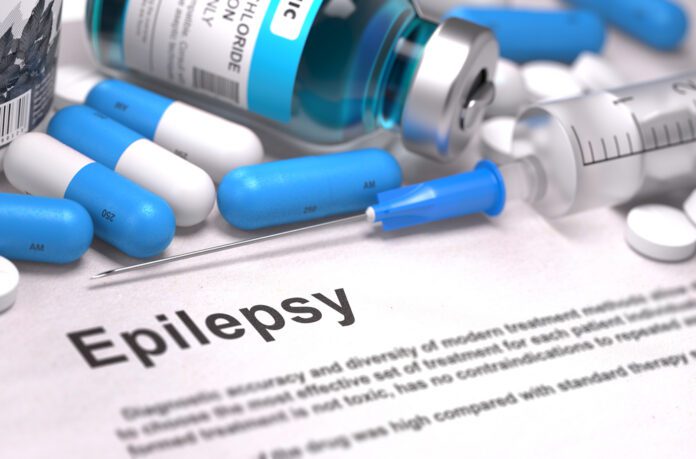Overview
Epilepsy is a chronic disorder that causes unprovoked, recurrent seizures. A seizure is a sudden rush of electrical activity in the brain.
There are two main types of seizures. Generalized seizures affect the whole brain. Focal, or partial seizures, affect just one part of the brain.
A mild seizure may be difficult to recognize. It can last a few seconds during which you lack awareness.
Stronger seizures can cause spasms and uncontrollable muscle twitches and can last a few seconds to several minutes. During a stronger seizure, some people become confused or lose consciousness. Afterward, you may have no memory of it happening.
Cause
Epilepsy occurs when changes in the brain cause it to be too excitable or irritable. As a result, the brain sends out abnormal signals. This leads to repeated, unpredictable seizures. (A single seizure that does not happen again is not epilepsy.)
Epilepsy may be due to a medical condition or injury that affects the brain. Or, the cause may be unknown (idiopathic).
Common causes of epilepsy include:
• Stroke or transient ischemic attack (TIA)
• Dementia, such as Alzheimer disease
• Infections, including brain abscess, meningitis, encephalitis, and HIV/AIDS
• Brain problems that are present at birth (congenital brain defect)
• Brain injury that occurs during or near birth
• Metabolism disorders present at birth (such as phenylketonuria)
• Abnormal blood vessels in the brain
• Other illness that damages or destroys brain tissue
• Seizure disorders that run in families (hereditary epilepsy)
Epileptic seizures usually begin between ages 5 and 20. There is also a higher chance of seizures in adults older than 60. But epileptic seizures can happen at any age. There may be a family history of seizures or epilepsy.
Symptoms
Symptoms vary from person to person. Some people may have simple staring spells. Others have violent shaking and loss of alertness. The type of seizure depends on the part of the brain that is affected.
Most of the time, the seizure is similar to the one before it. Some people with epilepsy have a strange sensation before each seizure. Sensations may be tingling, smelling an odor that is not actually there, or emotional changes. This is called an aura.
Your doctor can tell you more about the specific type of seizure you may have:
• Absence (petit mal) seizure (staring spells)
• Generalized tonic-clonic (grand mal) seizure (involves the entire body, including aura, rigid muscles, and loss of alertness)
• Partial (focal) seizure (can involve any of the symptoms described above, depending on where in the brain the seizure starts)
Treatment
Seizures are the main symptom of epilepsy. Symptoms differ from person to person and according to the type of seizure.
Focal (partial) seizures
A simple partial seizure doesn’t involve loss of consciousness. Symptoms include:
● alterations to a sense of taste, smell, sight, hearing, or touch
● dizziness
● tingling and twitching of limbs
Complex partial seizures involve loss of awareness or consciousness. Other symptoms include:
● staring blankly
● unresponsiveness
● performing repetitive movements
Generalized seizures
Generalized seizures involve the whole brain. There are six types:
Absence seizures, which used to be called “petit mal seizures,” cause a blank stare. This type of seizure may also cause repetitive movements like lip smacking or blinking. There’s also usually a short loss of awareness.
Tonic seizures cause muscle stiffness.
Atonic seizures lead to loss of muscle control and can make you fall suddenly.
Clonic seizures are characterized by repeated, jerky muscle movements of the face, neck, and arms.
Myoclonic seizures cause spontaneous quick twitching of the arms and legs.
Treatment can help most people with epilepsy have fewer seizures, or stop having seizures completely.
Treatments include:
● medicines called anti-epileptic drugs (AEDs)
● surgery to remove a small part of the brain that’s causing the seizures
● a procedure to put a small electrical device inside the body that can help control seizures
● a special diet (ketogenic diet) that can help control seizures
Some people need treatment for life. But you might be able to stop if the seizures disappear over time.
You may not need any treatment if you know the seizure triggers and can avoid them.
Tonic-clonic seizures used to be called “grand mal seizures.” Symptoms include:
● stiffening of the body
● shaking
● loss of bladder or bowel control
● biting of the tongue
● loss of consciousness
Following a seizure, you may not remember having one, or you might feel slightly ill for a few hours.
Anti-epileptic drugs (AEDs)
● AEDs are the most commonly used treatment for epilepsy. They help control seizures in about 70% of people.
● AEDs work by changing the levels of chemicals in the brain. They don’t cure epilepsy but can stop seizures from happening
Exams and Tests
The doctor will perform a physical exam. This will include a detailed look at the brain and nervous system.
An EEG (electroencephalogram) will be done to check the electrical activity in the brain. People with epilepsy often have abnormal electrical activity seen on this test. In some cases, the test shows the area in the brain where the seizures start. The brain may appear normal after a seizure or between seizures.
To diagnose epilepsy or plan for epilepsy surgery, you may need to:
• Wear an EEG recorder for days or weeks as you go about your everyday life.
• Stay in a special hospital where brain activity can be recorded while video cameras capture what happens to you during the seizure. This is called video EEG.
Tests that may be done include:
• Blood chemistry
• Blood sugar
• Complete blood count (CBC)
• Kidney function tests
• Liver function tests
• Lumbar puncture (spinal tap)
• Tests for infectious diseases
Head CT or MRI scan is often done to find the cause and location of the problem in the brain.
Source
https://www.healthline.com/health/epilepsy
https://www.nhs.uk/conditions/epilepsy/treatment/
https://www.healthline.com/health/epilepsy#epilepsy-symptoms



